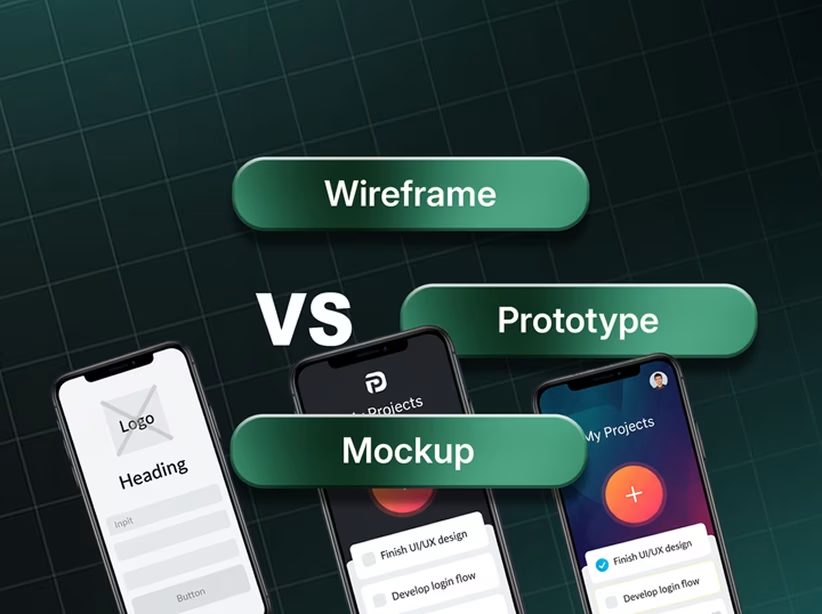
The financial technology landscape is evolving faster than ever. Startups are no longer just building apps they are shaping the way millions of people manage, invest, and transfer money. With 2025–2026 on the horizon, the FinTech ecosystem is poised for a wave of innovation, driven by AI, blockchain, digital banking, and next-generation payment solutions.
Yet, technology alone isn’t enough. User adoption, trust, and engagement depend heavily on design. This is where professional UI/UX design agencies come in—transforming complex financial products into intuitive, user-friendly platforms that customers actually want to use. In this guide, we explore the most promising FinTech startup ideas for 2025–2026, along with insights into how design expertise can accelerate their growth.
Why FinTech Startups Are Poised for Growth

FinTech startups continue to attract massive investment because they address longstanding gaps in the financial industry. Traditional banks often fail to meet modern customer expectations, leaving space for startups to innovate. From microfinance platforms serving the underbanked to neobanks targeting tech-savvy millennials, the market is ripe for disruption.
However, many startups struggle not with technology, but with adoption. Users may abandon apps that feel confusing, slow, or insecure. This is why partnering with a UI/UX design agency for FinTech apps is critical—they ensure that products are not only functional but also intuitive, visually appealing, and trustworthy.
Top FinTech Trends Shaping 2025–2026
Several technological and market trends are shaping the next wave of FinTech innovation:
- AI and machine learning for risk assessment, lending, fraud detection, and personalized financial advice.
- Blockchain and DeFi (Decentralized Finance) enabling secure, transparent, and decentralized transactions.
- Neobanks and digital banking platforms designed for mobile-first, customer-centric experiences.
- Payment innovations, including instant payments, cross-border transactions, and crypto integration.
- RegTech and compliance solutions, helping companies navigate complex regulatory landscapes efficiently.
UI/UX agencies play a pivotal role in these trends by designing products that balance advanced technology with usability. Even the most sophisticated AI system will fail if the interface is confusing or overwhelming to users.
AI-Powered Financial Services

Artificial intelligence is transforming the way financial services operate. Startups can leverage AI for automated lending decisions, fraud detection, and personalized wealth management. AI-driven apps can predict spending patterns, recommend savings strategies, and detect unusual account activity in real time.
However, these capabilities require careful design to ensure clarity and trust. A FinTech app design agency can create dashboards that present complex AI insights in simple, actionable ways. For instance, an AI lending platform could use intuitive visualizations to show credit risk, repayment timelines, and loan eligibility—making it easier for users to make informed financial decisions.
Blockchain and DeFi Solutions

Blockchain technology and decentralized finance (DeFi) are no longer niche concepts—they are mainstream drivers of financial innovation. Startups are building secure wallets, smart contract platforms, and decentralized lending systems.
Yet blockchain and DeFi products often appear complicated to non-technical users. UI/UX design agencies help by simplifying the onboarding process, clarifying wallet interactions, and designing visual cues that build trust. For example, a DeFi app can use color-coded transaction flows and interactive guides to make blockchain transactions understandable and safe for everyday users.
Neobanks and Digital Banking Innovations
Neobanks are digital-first banks designed for mobile and online banking. They cater to younger demographics, freelancers, and underserved markets, offering everything from instant account opening to seamless peer-to-peer payments.
A key factor in the success of neobanks is their interface. Clean, minimalist dashboards, effortless onboarding, and contextual help screens are essential. Design agencies specializing in digital banking UI design can help startups create visually appealing and frictionless experiences, boosting customer retention and satisfaction.
Payment and Transaction Solutions
Payment innovation is another hot area for FinTech startups. From instant cross-border transfers to cryptocurrency payment gateways, simplifying payments is a massive opportunity.
Yet users abandon apps when payment flows are confusing or slow. Partnering with a UI/UX design agency ensures that checkout flows are intuitive, errors are minimized, and trust indicators are clear. Agencies can optimize screens for mobile-first usage, reducing friction for international users or those with limited technical experience.
RegTech Startups: Compliance Meets Technology
Regulatory technology, or RegTech, helps companies automate compliance processes, monitor transactions, and adhere to evolving financial regulations. Startups in this space are building platforms for reporting, identity verification, and anti-money laundering checks.
UI/UX design agencies add value by transforming complex compliance dashboards into user-friendly experiences. For example, they can create visual alerts for suspicious activity, interactive audit logs, and streamlined reporting workflows that reduce cognitive load for compliance teams.
Financial Inclusion and Microfinance Platforms
Financial inclusion remains a critical challenge, especially in emerging markets. Startups providing microloans, mobile banking, and insurance to underserved populations are set to grow in 2025–2026.
Design agencies are vital for these products because the target users may have limited digital literacy. Clear navigation, iconography, and guided onboarding help ensure users can confidently access financial services. Inclusive design not only increases adoption but also strengthens trust and loyalty.
Investment and WealthTech Solutions
Robo-advisors, micro-investing apps, and AI-driven portfolio management tools are reshaping investment services. These platforms often require users to interact with complex financial data.
A FinTech app design agency can make investment dashboards digestible through visual hierarchies, interactive charts, and contextual tips. Well-designed UX encourages users to engage more, understand investment performance, and make informed decisions—turning a complicated experience into an approachable one.
InsurTech Innovations
Insurance technology is another fast-growing sector. Startups are using AI, IoT, and data analytics to automate underwriting, claims processing, and policy recommendations.
Even the most advanced InsurTech product needs a user-friendly interface. Agencies help by designing apps that simplify policy management, provide real-time claim tracking, and visually explain complex terms. This improves user satisfaction and reduces customer service overhead.
Cybersecurity for FinTech

Security is paramount in FinTech. Startups focusing on authentication, fraud prevention, and secure data storage are critical for a safe financial ecosystem.
UI/UX design agencies contribute by creating secure but intuitive authentication flows, multi-factor verification, and alerts that educate users without overwhelming them. Well-designed security UX reduces user errors and enhances confidence in the platform.
Collaborative FinTech Ecosystems
B2B FinTech platforms are enabling banks, startups, and developers to co-innovate. These ecosystems require clear dashboards, real-time collaboration tools, and easy integration options.
Design agencies play a crucial role in crafting collaborative interfaces that simplify workflows, monitor performance, and track financial metrics. This allows users to focus on innovation rather than struggling with cumbersome tools.
Real Example: FinTech Startup Success Stories with UI/UX Design Focus
Consider a neobank startup launching in 2025. The team partnered with a UI/UX design agency to build their mobile app. Starting with wireframes, they defined clear user flows. High-fidelity mockups established a visually consistent brand, and interactive prototypes allowed early user testing.
The result was a mobile app that combined advanced banking functionality with intuitive usability, leading to high adoption rates and positive feedback. This demonstrates that great technology needs great design to thrive in competitive FinTech markets.
Opportunities for Entrepreneurs and Investors in 2025–2026
FinTech innovation in 2025–2026 will be driven by AI, blockchain, digital banking, payment solutions, and RegTech. Startups that prioritize UI/UX design from day one will have a competitive advantage, ensuring adoption, trust, and user satisfaction.
Entrepreneurs should focus on: identifying market gaps, defining key features, partnering with expert FinTech UI/UX design agencies, iterating with prototypes, and launching scalable MVPs. Investors can look for startups that combine technology innovation with strong design expertise a formula for sustainable growth.
FAQs
1. What are the top FinTech startup ideas for 2025–2026?
The leading FinTech startup ideas include AI-powered personal finance apps, blockchain-based payments, neobanking platforms, RegTech solutions for compliance, and digital lending marketplaces. These concepts leverage emerging technologies to meet evolving financial needs.
2. Which FinTech sectors are expected to grow the fastest in 2025–2026?
Key growth sectors include digital payments, decentralized finance (DeFi), insurtech, AI-driven investment tools, and cybersecurity solutions for financial services. These areas address both consumer demand and regulatory innovation.
3. How can a FinTech startup succeed in 2025–2026?
Success depends on solving real financial problems, leveraging emerging technologies like AI and blockchain, complying with evolving regulations, and prioritizing seamless user experience. Early validation, strong partnerships, and scalability are also crucial.
4. What technologies are driving new FinTech startups?
Artificial intelligence, blockchain, cloud computing, open banking APIs, and advanced analytics are driving FinTech innovation. Startups using these technologies can deliver smarter, faster, and more secure financial services to users.
5. Are there opportunities for FinTech startups in specific regions?
Yes. MENA, APAC, and LATAM regions are witnessing rapid FinTech adoption due to underserved markets, high mobile penetration, and supportive regulatory sandboxes. Startups targeting these regions can scale quickly while addressing unique local financial challenges.
Fresh UI/UX Ideas, Straight to Your Inbox





